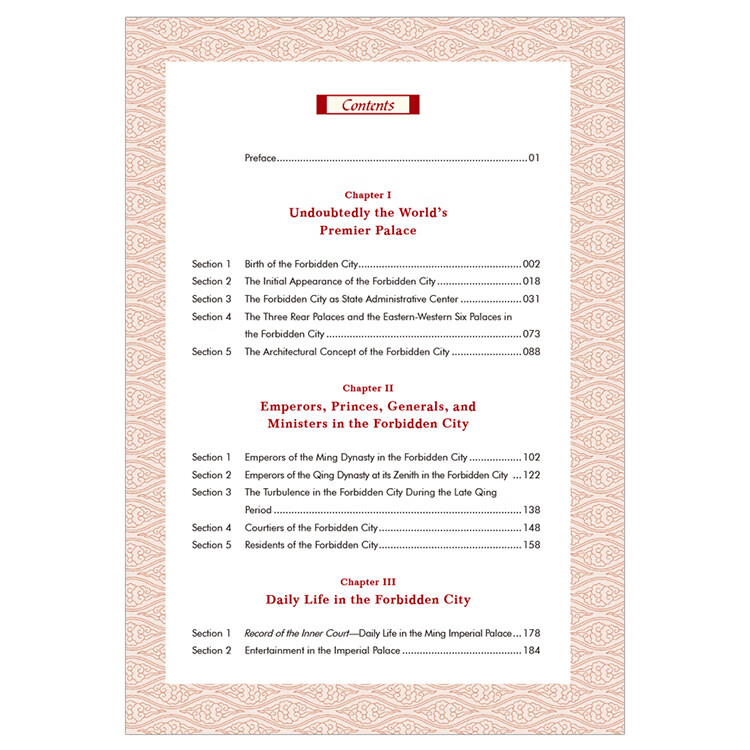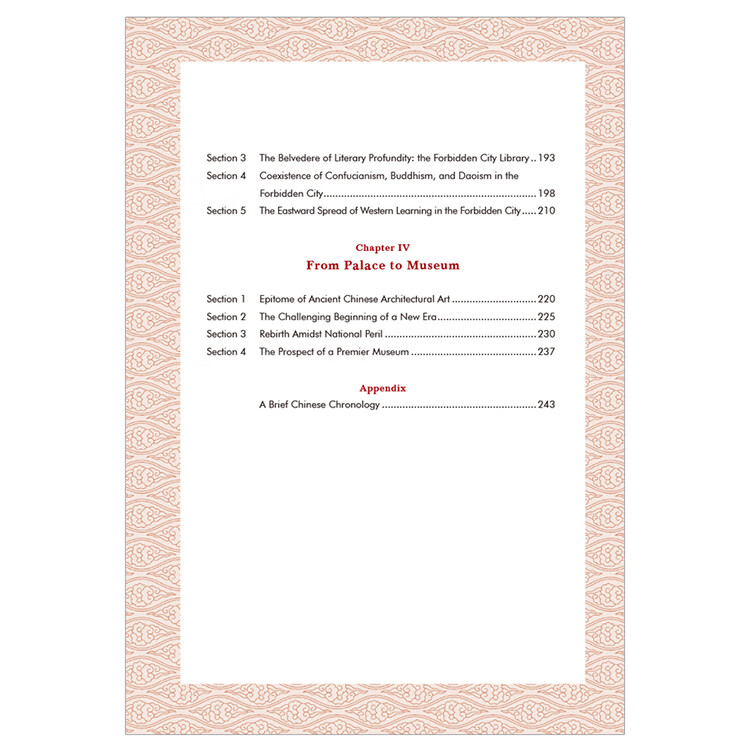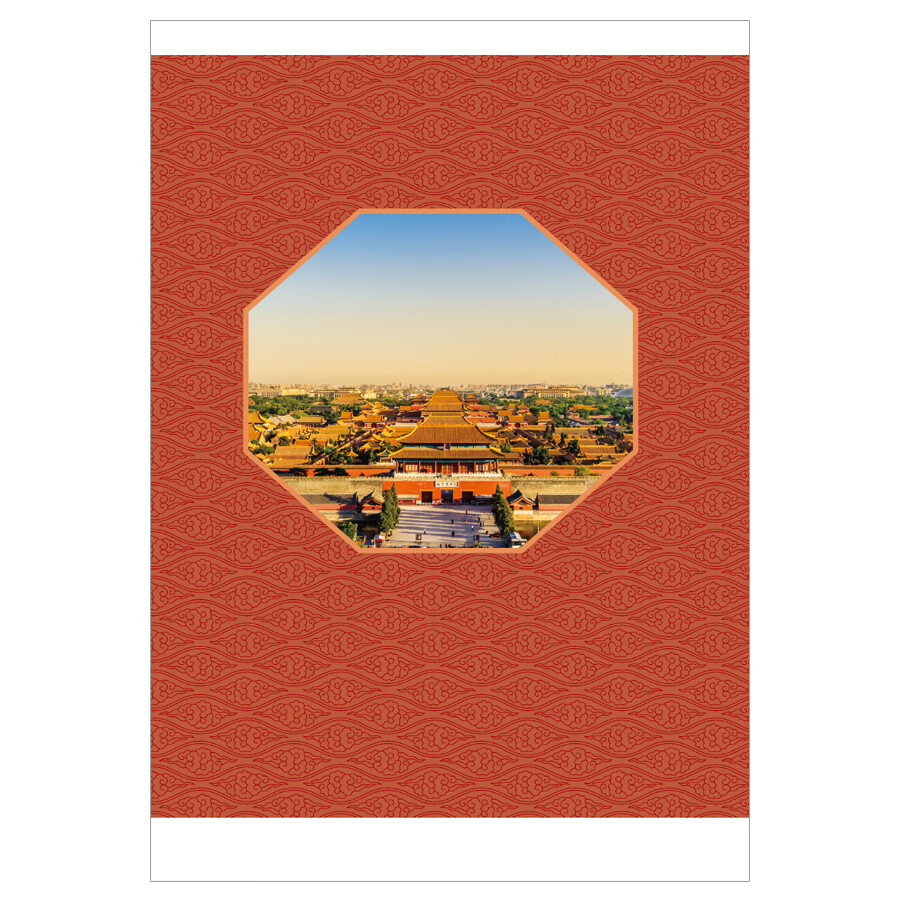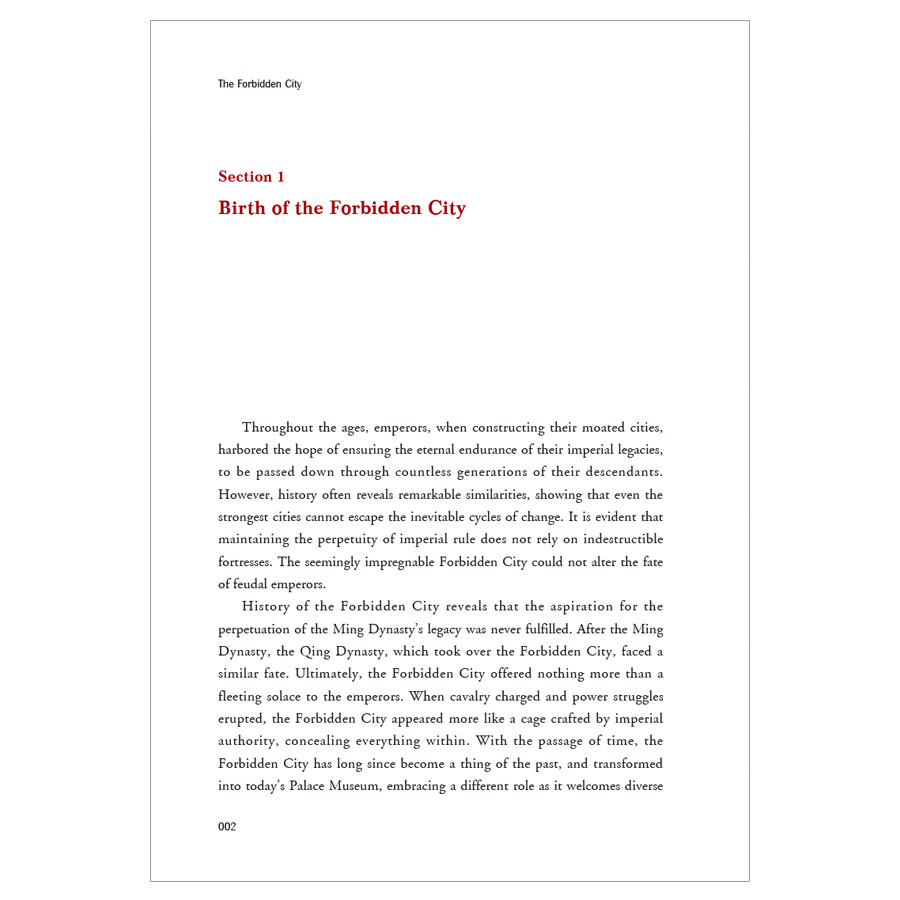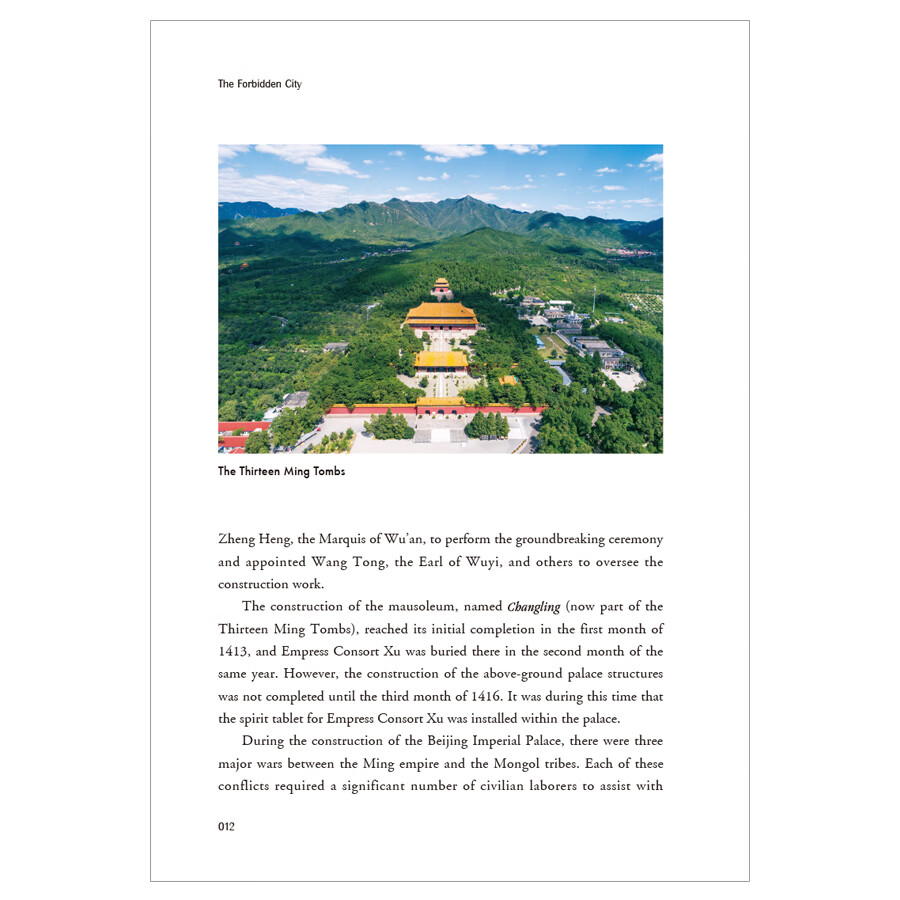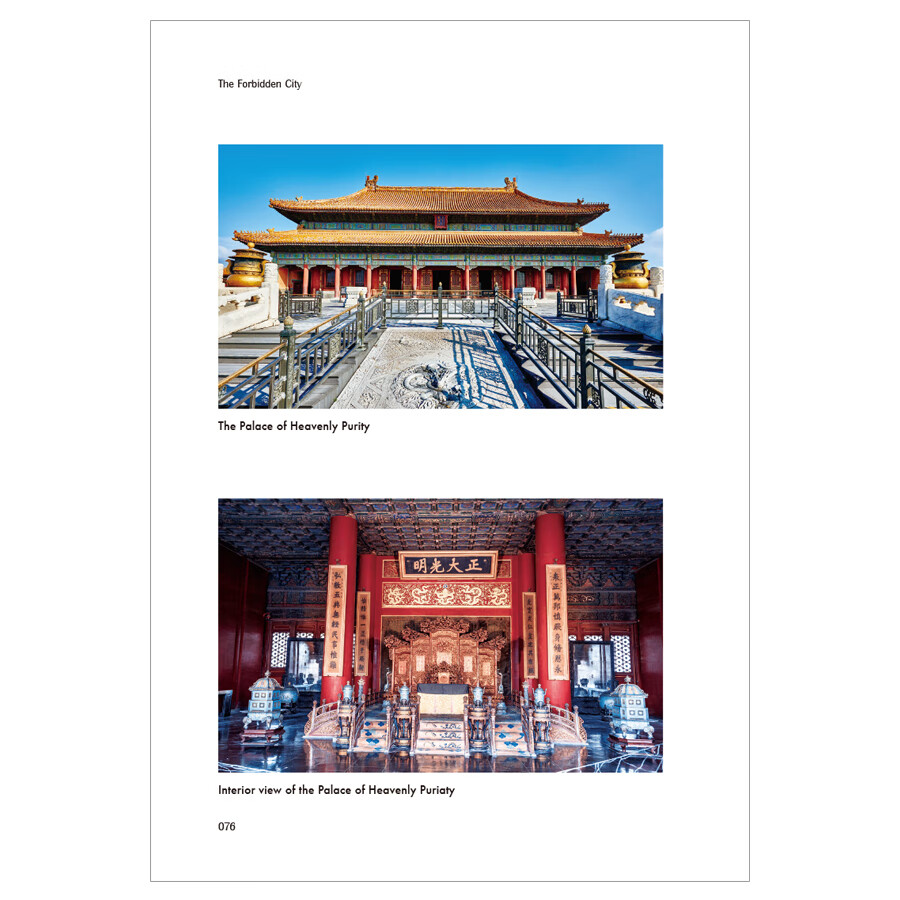Preface.......................................................................................01
Chapter I Undoubtedly the World’s Premier Palace
Section 1 Birth of the Forbidden City.........................................................002
Section 2 The Initial Appearance of the Forbidden City..............................018
Section 3 The Forbidden City as State Administrative Center......................031
Section 4 The Three Rear Palaces and the Eastern-Western Six Palaces in the Forbidden City.....073
Section 5 The Architectural Concept of the Forbidden City.........................088
Chapter II Emperors, Princes, Generals, and
Ministers in the Forbidden City
Section 1 Emperors of the Ming Dynasty in the Forbidden City...................102
Section 2 Emperors of the Qing Dynasty at its Zenith in the Forbidden City ....122
Section 3 The Turbulence in the Forbidden City During the Late Qing Period.........138
Section 4 Courtiers of the Forbidden City..................................................148
Section 5 Residents of the Forbidden City..................................................158
Chapter III Daily Life in the Forbidden City
Section 1 Record of the Inner Court—Daily Life in the Ming Imperial Palace....178
Section 2 Entertainment in the Imperial Palace..........................................184
Section 3 The Belvedere of Literary Profundity: the Forbidden City Library...193
Section 4 Coexistence of Confucianism, Buddhism, and Daoism in the Forbidden City........198
Section 5 The Eastward Spread of Western Learning in the Forbidden City......210
Chapter IV From Palace to Museum
Section 1 Epitome of Ancient Chinese Architectural Art..............................220
Section 2 The Challenging Beginning of a New Era...................................225
Section 3 Rebirth Amidst National Peril.....................................................230
Section 4 The Prospect of a Premier Museum............................................237
Appendix A Brief Chinese Chronology......................................................243
